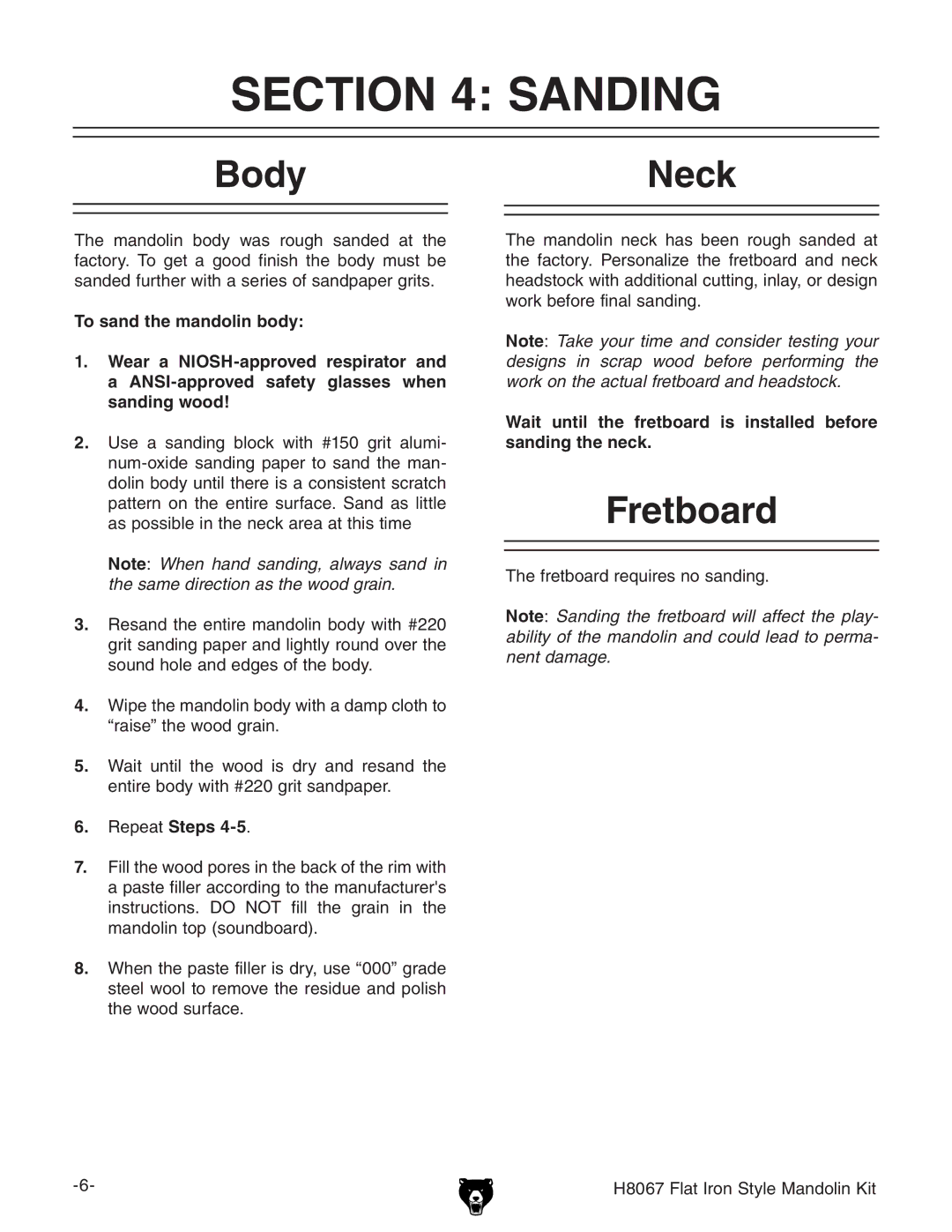
SECTION 4: SANDING
BodyNeck
The mandolin body was rough sanded at the factory. To get a good finish the body must be sanded further with a series of sandpaper grits.
To sand the mandolin body:
1.Wear a
2.Use a sanding block with #150 grit alumi-
Note: When hand sanding, always sand in the same direction as the wood grain.
3.Resand the entire mandolin body with #220 grit sanding paper and lightly round over the sound hole and edges of the body.
4.Wipe the mandolin body with a damp cloth to “raise” the wood grain.
5.Wait until the wood is dry and resand the entire body with #220 grit sandpaper.
6.Repeat Steps 4-5.
7.Fill the wood pores in the back of the rim with a paste filler according to the manufacturer's instructions. DO NOT fill the grain in the mandolin top (soundboard).
8.When the paste filler is dry, use “000” grade steel wool to remove the residue and polish the wood surface.
The mandolin neck has been rough sanded at the factory. Personalize the fretboard and neck headstock with additional cutting, inlay, or design work before final sanding.
Note: Take your time and consider testing your designs in scrap wood before performing the work on the actual fretboard and headstock.
Wait until the fretboard is installed before sanding the neck.
Fretboard
The fretboard requires no sanding.
Note: Sanding the fretboard will affect the play- ability of the mandolin and could lead to perma- nent damage.
H8067 Flat Iron Style Mandolin Kit |
